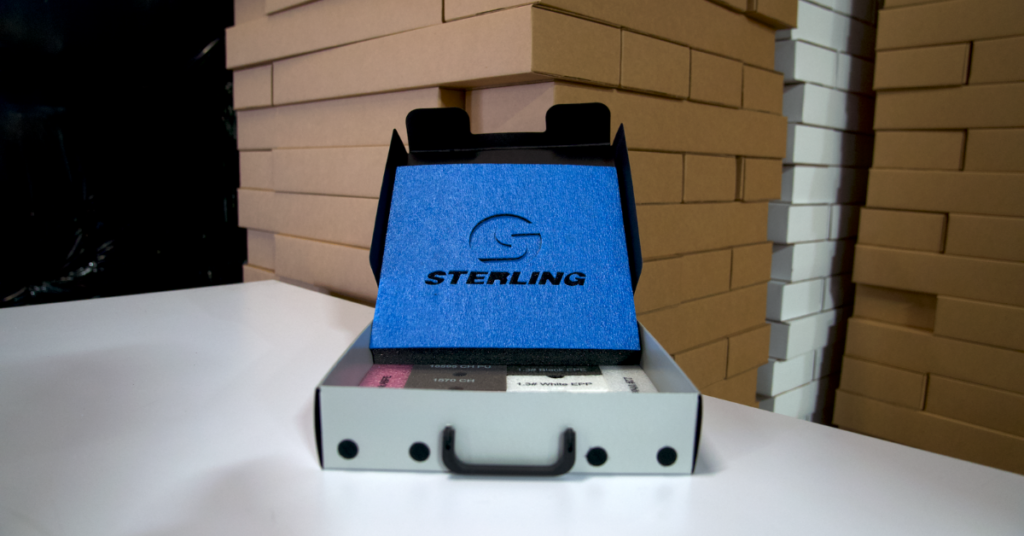Like every form of design, the product packaging and shipping methods we use today are the product of thousands of iterations and innovations that have been accumulating since the dawn of civilization. And just like a painter studying the cubism movement or an automotive engineer restoring a classic car, we can sometimes find a spark of new inspiration by exploring our history.
So today, we want to fly you through a brief overview of the history of product packaging. While we could dedicate an entire blog to covering the topic at length, this post will only touch on a few of the most key inflection points.
A Brief Trip to the Distance Past
We won’t spend too long in ancient history, but it’s worth noting that packaging was invented to help people to store, transport, and trade valuable resources. For as far back as archeologists can dig, we have evidence of people worldwide using organic items like gourds, animal skins, and hollow logs to keep their food and water handy. Of course, gourds and logs become much less practical when you need more containers that last a lot longer. This led to many ancient civilizations developing early forms of ceramics and glass blowing, allowing for the average household to store and keep a lot more essential items.
Although sturdier and more flexible materials came along, the idea of “disposable” packaging didn’t exist for the vast majority of recorded history. Save for temporarily wrapping goods in leaves or the soft fibers of certain trees, anything that was precious enough to be sold or traded did so in a reusable container.
The Birth of Manufacturing and Global Retail
Like most things that are now commonplace, single-use packaging as we are accustomed to it today arrived with the Industrial Revolution in the 1800s. Around that same time, world conquest and exploration were all the rage in Europe. Napoleon and other rulers were looking to gain access to the resources of other countries (often by force), and that meant creating new ways to supply their forces and transport goods.
Taking advantage of the factory model, inventors across Europe and America began devising new ways to make glass and tin containers with more consistency and higher volumes than ever before. At the same time, new techniques had been discovered to make paper more affordable than ever, and by 1840, both the first cardboard box and the first paper bag had been implemented. With the wide adoption of commercial printing and finally the invention of strong industrial adhesives, all the pieces were in place for disposable packaging as we know it.
The Consumer Product Revolution
Before a network of trading routes spanned the globe and manufactured goods existed, there wasn’t much need for products to have a “visual identity.” You likely bought most of the things you needed, like textiles or grain, from whoever produced them closest to you. But with the opportunity to sell more sophisticated goods worldwide came the need to make them visually distinct. Some of the earliest examples of this were formulated medicines, like cough syrups, and early processed foods like crackers.
Sitting at the intersection of this and the disposable packaging revolution was NABISCO, which historians often credit for developing the first branded and globally marketed consumer product in 1896, “Uneeda Biscuits.” In addition to distinguishing their biscuits from products found in numerous local markets, NABISCO wanted to create a memorable way of telling customers about the wax paper packaging that was meant to keep their treats fresh and dry.
Plastic, Aluminum, and Mass Retail
While glass, tin, and cardboard were all well and good, they all had severe limitations. Either they were too fragile to transport certain goods for thousands of miles safely, or they simply cost too much to make products scalable. Although several innovations like heat sealing and pasteurization helped preserve goods, they didn’t work for everything. During this period, slow but steady progress was made on improving and popularizing the tin can. It continued to see numerous improvements, production innovations, and finally, the shift to aluminum before finally seeing regular retail use in the 1930s.
Then came the invention of plastics. Although several forms of it had been discovered near the beginning of the 1800s, no one really knew what to do with the stuff, as no reliable formulations or manufacturing techniques were found. That at last changed when cellophane was invented in 1908. Although limited in use (it was moisture-resistant but stuck to most things), the potential it held led to a much greater interest in plastics. By the late 40s, mainly in response to the metal scarcity of World War II, the first plastic containers appeared on store shelves. By the 1970s, PET was invented, and alongside the many innovations happening in printing and dyeing, retail adoption of plastic was in full effect.
The Future and Building a More Sustainable World
Most of the packaging materials we interact with every day were made and adopted for two noble reasons: to keep goods longer and make them more affordable. Unfortunately, we didn’t know as much as we do know about their environmental impact and recyclability. So now we find ourselves battling a new problem, how do we make these materials, or entirely new substitutes, more responsibly?
This is where we see history come full circle. Much like our ancestors and their clay pots, some companies are looking at new ways to make packaging more valuable and reusable. After all, if too many single-use packages are how we got here, maybe containers we can hold onto for longer are part of the solution. Similarly, we can continue to pursue more renewable alternatives that leave less of a mark on our planet when we’re done with them.
Although we continuously see promising headlines of plastics made from seaweed and other exciting advancements, the solution could be just as surprising to us as cardboard was to consumers in the 1800s. Regardless, our goal should be the same: to keep striving for newer and better ways to package the things we need.


